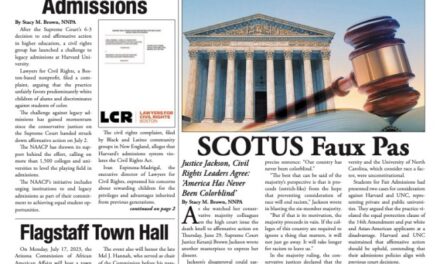By Dom DiFurio
As a small business owner, planning for employees’ retirement may sound daunting, but it doesn’t have to be. To help demystify the process, Guideline compiled this list of introductory tips about 401(k) plans for small business owners using information from a variety of sources, including the IRS and the Department of Labor. There are many different approaches to create a 401(k) plan that fits a company, and while there is no one size fits all approach, this beginners’ guide can help business owners begin to explore options.

Photo: Nappy.co/Jason1
Whether it’s a traditional 401(k), a profit-sharing plan, or another retirement plan altogether, defined-contribution plans can provide your workers with more peace of mind about their futures. In fact, some states like Oregon, Illinois, and California have passed legislation requiring employers to allow paycheck deductions for retirement savings.
A 401(k) may be one of the simplest ways to differentiate your job benefits from peer companies in today’s tight labor market. There are nearly twice as many openings as there are workers looking for jobs, according to July 2022 data from the Labor Department’s Job Openings and Labor Turnover Survey, so making your company’s benefits more appealing can help with recruitment.
As of 2021, nearly 63 percent of U.S. households—which represents about 82 million Americans of all ages—had either an employer-sponsored retirement plan or IRA. And when it comes to small businesses, 58 percent of workers at companies with fewer than 100 employees have access to retirement benefits, per March 2021 data from the U.S. Bureau of Labor Statistics. These plans held assets totaling around $7.3 trillion in the first quarter of 2022, according to data from the Investment Company Institute.
This guide can help small business owners take part in boosting the ratio of Americans with access to retirement benefits—because planning ahead is good for business, workers, and the U.S. economy.
Types of 401(k) plans
A traditional 401(k) plan gives employees the option to regularly defer a portion of their pre-tax earnings to an account that invests that cash based on parameters they set. The employer can choose to contribute a set amount to plan participants’ retirement accounts or match a percentage of participants’ contributions. A profit-sharing retirement plan also allows the employer to adjust contributions annually depending on business performance.
Those investments grow over many years or until the worker surpasses the age of 59 ½. At this age, an account holder can make withdrawals from the account without penalty—however, any withdrawals from a traditional 401(k) are taxed similar to income.
It’s important to keep in mind, however, that there are more options besides the traditional 401(k).
A Roth 401(k) plan allows an employee to contribute a percentage of after-tax earnings. When withdrawals are made after age 59 ½, they are tax-free.
A profit-sharing 401(k) allows employees to defer a portion of their earnings and make retirement contributions, while also giving employers the ability to contribute to employees’ plans each year, including the ability to make large contributions.
A safe harbor 401(k) requires a minimum 3 percent contribution to all participants, or specified matching contributions of at least 4 percent from employers. This type of plan allows employers to pass most mandatory nondiscrimination testing, which would otherwise need to be completed annually to ensure fairness and equity in the company’s benefit programs.
And an automatic enrollment 401(k) plan operates the way it sounds—automatically enrolling every employee once they become eligible in a plan. It defers a set percentage of their paycheck into their 401(k) plan for each pay period. Employees who don’t opt-out can reduce their annual income for potential tax benefits while also growing a retirement nest egg. These savings can grow even faster if an employer offers a matching contribution.
What to consider when setting up a 401(k) plan
After deciding which 401(k) plan is best for your business, it’s time to set it up. The exact list of required documentation can vary depending on the business and plan chosen, but some of the items include a written plan document that outlines the plan itself, a trust to hold the plan’s assets, a system for keeping plan records, and informational resources for employees eligible to participate. How a business owner decides to roll these out depends on whether you choose to tackle it more hands-on or with professionals.
Financial advisors, institutions, and consultants can be hired to assist with these steps or carry out much of the process for you. Financial institutions often offer paid services to keep track of companies’ 401(k) plans, participants, investments, and distributions, but it can also be handled by the same party administering the plan. Proper record-keeping will be beneficial when the company files retirement plan documents with the IRS each year.
Employers are required to give employees what is called a summary plan description, which outlines the inner workings of the plan, any potential employer matching, and other essential plan details. An employer can also provide information regarding why they chose a specific retirement plan for employees and the perceived benefit over other types.
How to pick a service provider
With operating a retirement account comes fiduciary responsibility and, of course, potential liability. Employers who wish to limit their liability sometimes opt to hire a service provider to handle operations. It’s worth noting, however, that bringing on a service provider doesn’t necessarily free the company from all liability.
When choosing a 401(k) service provider, the federal government recommends first considering the firm’s partners, financial stability, and assets already under management.
The company should also understand how the service provider conducts business. Your small business should be asking itself and prospective service providers: Will the firm handle selecting and managing investment for the assets in the plan? How? Who are the professionals handling the plan? Have they been the subject of any recent litigation? Has the firm?
It’s also recommended that a company keep tabs on the financial institution or retirement benefit professional hired over the lifetime of the contract.
What to report to the government
One of the most advantageous aspects of setting up a 401(k) retirement plan for employees is the fact that company contributions are tax-deductible from business income. And of course, the money that sits in these plans can grow with a deferred tax burden.
But a company is still expected to report some things to the government through an IRS document called Form 5500. Businesses with fewer than 100 employees enrolled in a 401(k) plan are required to file a Form 5500-SF, specifically. You’ll be required to share some basic information about your plan and how many people use it, as well as details about the plan’s assets, liabilities, and income. If the plan for your small business only has one person enrolled, the company should file a Form 5500-EZ.
Some employers will also have to undergo annual testing of their plan to ensure it isn’t favoring employees with higher compensations nor discriminating against employees with lower incomes. The IRS provides a handy checklist for keeping your plan in compliance.
Terminating a 401(k) plan
Need to terminate your 401(k) plan? Retirement plans are intended to be set up and run in perpetuity, but there are times when a business may need to end its plan.
The company will need to prepare for this by amending its current 401(k) plan. Companies should establish a date by which they want to end the plan, stop all contributions, give all account holders affected by the plan’s termination full vesting benefits, and make sure the company can distribute all of the plan’s benefits to participants within a year of the termination date, according to the IRS. Importantly, don’t forget to notify participants about the plan’s termination.
Any outstanding amounts you are obligated to contribute under the plan must be paid prior to termination. You should also be sure to provide notice to affected participants about what to expect should they choose to roll their accounts over to another type of retirement account, such as an IRA.
This article was originally published by Stacker Studios.
The post A small business owner’s guide to starting a 401(k) plan appeared first on AFRO American Newspapers.









